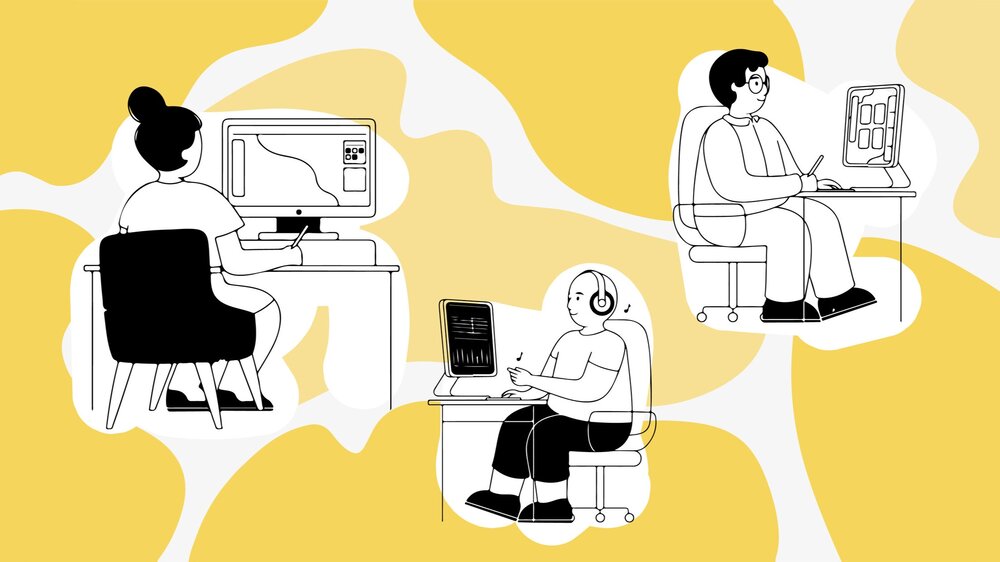5 Ways to Boost Employee Morale for Remote Teams in 2024
In a remote workforce, there's extra weight on team managers to boost their team’s morale
by CJ Cowan - December 21st, 2023
In a remote and distributed workforce, there is an extra responsibility on team managers to lean in on boosting their team’s morale – which is strongly correlated to their productivity, performance, job satisfaction, and most importantly, their mental health and stress levels.
Managers of remote or distributed teams don’t have the luxury to duck out of their office to observe the body language, behavior, and general emotional temperature of their team.
The solution is to take proactive measures and structure virtual teams in such a way as to prevent and mitigate the effects of burnout and low employee morale. This can be achieved through:
Communication: This is the most important part of workplace morale. A lot of sources of declining morale begin and end with the quality of the communication amongst your team. Open, continuous, and referrable communication is vital to mitigate confusion, stress, and anxiety.
Recognition: Recognizing the hard work of your team and specific employees will make your team know their value and importance thus increasing job satisfaction. Recognize good work with bonuses, swag, and opportunities for growth.
Team-building: Fostering an environment of trust, empathy, and comradery will make for a more cooperative, collaborative, and happy environment.
What is employee morale?
According to Forbes, it is “ the job satisfaction, attitude, and outlook that employees have while at your business.”
It means exactly what it says on the tin. It may be a simple idea, but it is very hard to fix once it has declined. An important first step is to determine what makes employee morale decline. Here are just four employee morale killers.
What impacts employee morale?
Overwork
It is true that remote teams and even entirely distributed workforces can get the same or even more work accomplished as compared to their onsite counterparts, but this has its rational limits.
Some team managers are under the faulty assumption that they can demand way more work from their virtual teams simply because they have the ‘privilege’ of working from home.
 This self-serving and shortsighted perspective is the death kiss of many distributed teams and many remote-first businesses. Working from home is not a ‘privilege’, it’s just good business that benefits both parties, team managers and team members. Treating remote workers differently will lead to them feeling undervalued, othered, and diminished, and these employees will leave to find greener pastures.
This self-serving and shortsighted perspective is the death kiss of many distributed teams and many remote-first businesses. Working from home is not a ‘privilege’, it’s just good business that benefits both parties, team managers and team members. Treating remote workers differently will lead to them feeling undervalued, othered, and diminished, and these employees will leave to find greener pastures.
Overwork will depress and overstrain your team. It’s important to have a frank and open discussion about the psychological effects of working from home.
Personal Growth
Human beings desperately need to learn, grow, and be challenged in order to be happy. They want to count and be counted on – and be recognized professionally and financially for doing so.
 Doing the same tasks in the same way for the same pay will send competent members of your distributed teams running for the hills. Individuals who are comfortable working with distributed teams that are stagnant and repressive are not likely the go-getters a growing business needs.
Doing the same tasks in the same way for the same pay will send competent members of your distributed teams running for the hills. Individuals who are comfortable working with distributed teams that are stagnant and repressive are not likely the go-getters a growing business needs.
If you want low turnover and to increase employee retention, then it is incumbent on you as a remote office manager to create the sort of distributed team model where the best talent wants to lay down roots and shoot for the sky.
Micromanaging
This demoralizing management style is annoying when it’s an onsite manager doing it, but it is more stressful when working asynchronously or through digital barriers. It can be hard to provide solutions for serious problems and even harder for unserious ones.

Your team members first need to figure out what the minute problem a micromanager has and what tiny correction will get them off their back when they could be spending time getting actual work done and providing deliverables.
The negative effects of micromanagement are well known. It sends the team's stress levels into overdrive and makes them resent management. The damage this could do to productivity, employee retention, and the company’s bottom line could be devastating.
Lack of communication and clarity
According to Clear Company, 86% of employees and executives cite a lack of collaboration or ineffective communication for workplace failures.
Poor communication about what needs to be done and when it needs to be done obviously causes anxiety, but there is also a problem when the team does not know why it needs to be done.
 This lack of clarity about the goals of the day-to-day operations and the long-term goals of the business can make the work seem tedious and pointless which will dip productivity. If you want a team to help you realize the big picture, you have to let them in on what you have in mind.
This lack of clarity about the goals of the day-to-day operations and the long-term goals of the business can make the work seem tedious and pointless which will dip productivity. If you want a team to help you realize the big picture, you have to let them in on what you have in mind.
How do I boost employee morale?
If you’re worried about your employee morale while your distributed teams are working from home, we've got you covered. These insights below are not quick fixes or Band-Aids; they’re ways to structure your organization so that morale becomes high and stays high. Trust us, they will pay back in dividends for you and your team.
1. Transparency
Be open and clear about the goals and health of the business. If there are revenue problems, technical issues, or general confusion about the right path forward, be honest and open about it. This will let your team know that you trust them and that you care about their opinion.
 In turn, employees will feel like they have a stake in the business and some control over its fate, so they will likely feel a push to dig in and get to work to keep the business on track.
In turn, employees will feel like they have a stake in the business and some control over its fate, so they will likely feel a push to dig in and get to work to keep the business on track.
Give your employees a call to action, and you’ll be pleasantly surprised by how willing your team is to answer.
2. Communication
In remote office management, it’s not always possible for distributed workforces to get all the information they need to meet shared goals. Modes of quick clarification and iteration are either limited or nonexistent –especially for virtual teams that are entirely asynchronous.
This will lead to mix-ups and hiccups that will slow down productivity, waste valuable time and resources, and spike stress levels within your team.
 Therefore, communication is key to success when working with distributed teams. Proactive measures need to be taken to ensure information and instruction are shared efficiently and effectively.
Therefore, communication is key to success when working with distributed teams. Proactive measures need to be taken to ensure information and instruction are shared efficiently and effectively.
Our friends at Gitlab are vocal proponents of the benefits of frequent and consistent documentation in the distributed workplace; read more in their remote playbook.
3. Team-building
Team-building is the purposeful process of forging connections between colleagues so that everyone can work better towards shared goals. When everyone on your team feels connected, wanted, and part of something larger than themselves, they will have higher levels of job satisfaction and be more productive. This can emerge organically in on-site workplaces, but it is much harder to foster in distributed teams.
 Online team-building activities are a great way to solve this problem when leading distributed teams. Our partners at WFHomie offer tons of tried and tested virtual events that can suit any kind of team, large or small. They offer everything from virtual escape rooms to bubble tea-making classes!
Online team-building activities are a great way to solve this problem when leading distributed teams. Our partners at WFHomie offer tons of tried and tested virtual events that can suit any kind of team, large or small. They offer everything from virtual escape rooms to bubble tea-making classes!
If professionally-designed virtual team-building activities aren’t in your budget, here is our free list of virtual team-building icebreakers.
4. Recognition
It is vital to acknowledge the hard work of your employees publicly and substantially. Not only does it make the specific employees you’re celebrating feel valued, but it will also inspire others to go the extra mile.
It will show the whole team that what they do for the business is noticed and appreciated. You can do this by posting a special thank you message to an employee in a slack channel or by mailing them a special gift.
 This shouldn’t just be a top-down process; a team manager of a distributed team should also encourage their team to recognize each other. Peer-to-peer recognition is an excellent source of team-building that makes everyone feel good and work harder.
This shouldn’t just be a top-down process; a team manager of a distributed team should also encourage their team to recognize each other. Peer-to-peer recognition is an excellent source of team-building that makes everyone feel good and work harder.
Our friends at WFHomie are always innovating to make work suck less, which is why they developed the Kudos bot, a slack bot to energize your peer-to-peer team-building efforts. This slack bot will empower your team to recognize each other's contributions to the team quickly and easily with electronic gift cards for companies such as Uber Eats!
5. Incentivized employee growth
This should be at the top of your employee engagement tool kit. You should motivate your team not just with their salary, but extras based on their specific performance. You can do this with bonuses, time off, swag, and vertical advancement within the business.
If star employees are given reason to trust that there is more opportunity to grow within the team, then retention levels, employee happiness, and the quality of work will go up.
Updated 12/21/2023
Recommended Posts
22 Employee Engagement Ideas That Remote Workers Love
Blog Articles
HR's Guide to Creating a Remote Work Policy
Blog Articles
Search...
Product
GoCo
Resources
Articles
eBooks
Webinars
Customer Stories



